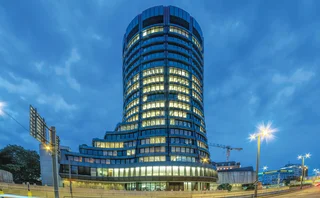
UK bankers fear capital floors higher under latest Basel II plans
The British Bankers' Association (BBA) is concerned that global banking regulators appear to have raised and expanded the application of the capital charges floor in the Basel II bank Accord, a BBA official said today.
The BBA welcomed the overall statement as “a substantial step forward” in progress with the Accord, but not the last word. “We need the numbers and we need to test them,” the spokesman said.
The risk-based Accord will determine from late 2006 how much capital major banks must set aside as a cushion of reserves to guard against banking risks. A key aim is to encourage banks to use advanced models to measure the risks they face. Banks using advanced approaches should enjoy lower capital charges than banks using cruder methods.
The Basel Committee said today that it was dropping its earlier proposal that capital charges against operational risks for banks using advanced approaches should not initially fall below 75% of what they would be using the simpler standardised approach.
The Basel regulators had initially proposed a floor for banks using the advanced internal ratings-based (IRB) approach to measuring credit risk of 90% of the foundation IRB, the BBA spokesman said.
The existence of floors reflects regulator concern that the advantages of using advanced approaches shouldn’t be too great until Basel II is bedded down and any problems ironed out. Critics said the floors act as a disincentive to banks to use the advanced approaches.
Under the new approach announced today there would be a single capital floor for the first two years after the Accord comes into effect that would be related to the capital rules of the current and simpler Basel I accord that dates from 1988.
For the first year of the Accord’s operation, “IRB capital requirements for credit risk together with operational risk capital charges cannot fall below 90% of the current minimum required”, the committee said. Minimum protective capital under Basel I must be at least 8% of a bank’s risk-weighted assets.
The floor in the second year of Basel II will be 80% of the Basel I requirements.
The Basel Committee said it would be prepared to keep the floor in place beyond 2008 if problems emerged.
The BBA fears that the wording of today’s statement implies that the floor has been extended to both the advanced and foundation IRBs, and overall represents a higher a floor in practice than those proposed in the committee’s earlier proposals.
Only users who have a paid subscription or are part of a corporate subscription are able to print or copy content.
To access these options, along with all other subscription benefits, please contact info@risk.net or view our subscription options here: http://subscriptions.risk.net/subscribe
You are currently unable to print this content. Please contact info@risk.net to find out more.
You are currently unable to copy this content. Please contact info@risk.net to find out more.
Copyright Infopro Digital Limited. All rights reserved.
You may share this content using our article tools. Printing this content is for the sole use of the Authorised User (named subscriber), as outlined in our terms and conditions - https://www.infopro-insight.com/terms-conditions/insight-subscriptions/
If you would like to purchase additional rights please email info@risk.net
Copyright Infopro Digital Limited. All rights reserved.
You may share this content using our article tools. Copying this content is for the sole use of the Authorised User (named subscriber), as outlined in our terms and conditions - https://www.infopro-insight.com/terms-conditions/insight-subscriptions/
If you would like to purchase additional rights please email info@risk.net
More on Regulation
Industry calls for major rethink of Basel III rules
Isda AGM: Divergence on implementation suggests rules could be flawed, bankers say
Saudi Arabia poised to become clean netting jurisdiction
Isda AGM: Netting regulation awaiting final approvals from regulators
Japanese megabanks shun internal models as FRTB bites
Isda AGM: All in-scope banks opt for standardised approach to market risk; Nomura eyes IMA in 2025
CFTC chair backs easing of G-Sib surcharge in Basel endgame
Isda AGM: Fed’s proposed surcharge changes could hike client clearing cost by 80%
UK investment firms feeling the heat on prudential rules
Signs firms are falling behind FCA’s expectations on wind-down and liquidity risk management
The American way: a stress-test substitute for Basel’s IRRBB?
Bankers divided over new CCAR scenario designed to bridge supervisory gap exposed by SVB failure
Industry warns CFTC against rushing to regulate AI for trading
Vote on workplan pulled amid calls to avoid duplicating rules from other regulatory agencies
Bank of Communications moves early to meet TLAC requirements
China Construction Bank becomes last China G-Sib to release TLAC plans
Most read
- Top 10 operational risks for 2024
- Japanese megabanks shun internal models as FRTB bites
- Top 10 op risks: third parties stoke cyber risk







